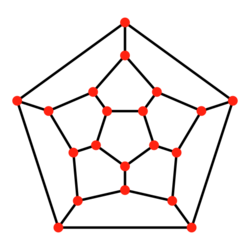Map (graph theory)
From HandWiki
In topology and graph theory, a map is a subdivision of a surface such as the Euclidean plane into interior-disjoint regions, formed by embedding a graph onto the surface and forming connected components (faces) of the complement of the graph. That is, it is a tessellation of the surface. A map graph is a graph derived from a map by creating a vertex for each face and an edge for each pair of faces that meet at a vertex or edge of the embedded graph.[1]
References
- ↑ Gross, Jonathan; Yellen, Jay (1998), Graph Theory and its applications, CRC Press, p. 294, ISBN 0-8493-3982-0
 |


